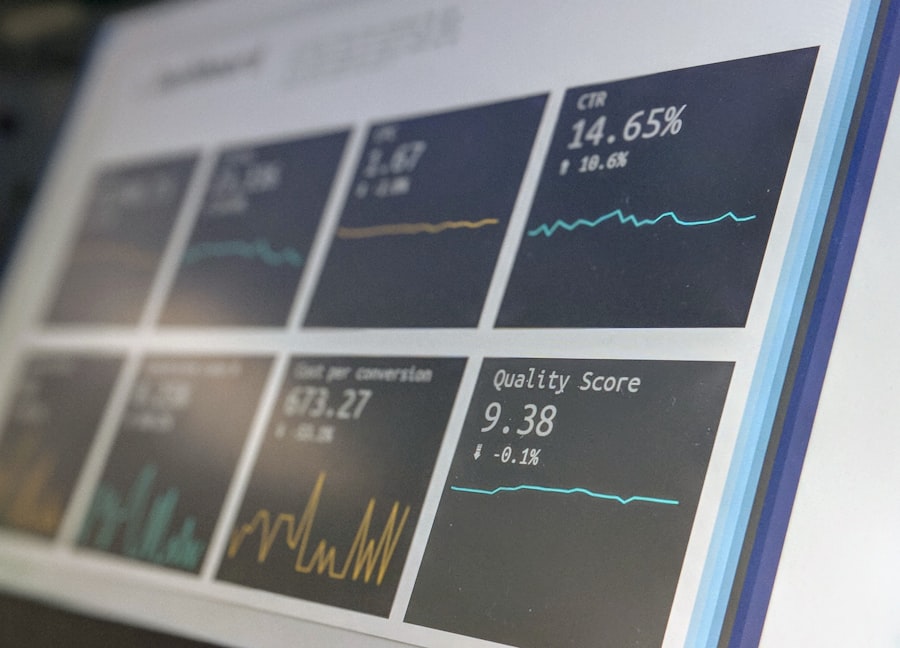In the competitive digital landscape, where consumer behavior constantly evolves, enterprise SEO audits are crucial for businesses seeking to improve online visibility. These audits comprehensively evaluate a company’s website and digital presence, identifying strengths, weaknesses, and areas for improvement. This strategic process can significantly impact search engine rankings, user experience, and ultimately, a company’s profitability.
Enterprise SEO audits systematically analyze various website components, uncovering hidden issues that may hinder performance in search engine results pages (SERPs). This proactive approach enables organizations to adapt to algorithm changes and shifting market dynamics, staying ahead of competitors. The importance of enterprise SEO audits extends beyond technical fixes.
They provide valuable insights into user behavior and engagement metrics, essential for developing effective digital marketing strategies. By understanding user interactions, businesses can tailor content and design to better meet audience needs, enhancing user satisfaction, fostering brand loyalty, and encouraging repeat visits. In an era of high consumer expectations, neglecting SEO intricacies can lead to missed opportunities and reduced market share.
Therefore, enterprise SEO audits are not merely beneficial but essential components of a robust digital strategy driving long-term success.
Key Takeaways
- Enterprise SEO audit is crucial for understanding the current state of your website’s SEO and identifying areas for improvement.
- Setting up a comprehensive framework for your enterprise SEO audit involves defining goals, establishing KPIs, and selecting the right tools for analysis.
- Conducting a thorough website analysis involves assessing factors such as site structure, indexing, and crawlability to identify issues and opportunities for optimization.
- Evaluating on-page SEO elements such as content quality, keyword optimization, and internal linking is essential for improving website visibility and relevance.
- Analyzing off-page SEO factors, including backlink profile and social signals, is important for understanding the website’s authority and reputation in the eyes of search engines.
- Leveraging technical SEO for enterprise websites involves optimizing factors such as site speed, mobile-friendliness, and schema markup to improve overall website performance.
- Implementing recommendations from the SEO audit and continuously monitoring progress is essential for maintaining and improving website visibility and performance in search engines.
Setting Up Your Enterprise SEO Audit Framework
Establishing a solid framework for conducting an enterprise SEO audit is paramount to ensuring that the process is thorough and effective. The first step in this framework involves defining clear objectives that align with the overall business goals. This could range from increasing organic traffic to improving conversion rates or enhancing brand visibility.
By setting specific, measurable goals, organizations can focus their audit efforts on areas that will yield the most significant impact. Additionally, assembling a cross-functional team that includes SEO specialists, content creators, web developers, and marketing strategists can provide diverse perspectives and expertise, enriching the audit process. Once the objectives are established and the team is in place, the next phase involves selecting the right tools and technologies to facilitate the audit.
There are numerous SEO tools available that can assist in gathering data on website performance, keyword rankings, backlink profiles, and more. Utilizing a combination of these tools will provide a comprehensive view of the website’s health. Furthermore, it is essential to create a timeline for the audit process, outlining key milestones and deadlines to ensure that the project remains on track.
By meticulously planning each stage of the audit, organizations can maximize efficiency and ensure that no critical aspect is overlooked.
Conducting a Comprehensive Website Analysis

A comprehensive website analysis forms the backbone of an effective enterprise SEO audit. This analysis begins with a thorough examination of the website’s structure and architecture. A well-organized site structure not only enhances user experience but also facilitates search engine crawling and indexing.
During this phase, auditors should assess the hierarchy of pages, URL structures, and internal linking strategies. Identifying any issues such as broken links or orphaned pages is crucial, as these can negatively impact both user experience and search engine rankings. Additionally, evaluating the website’s loading speed and mobile responsiveness is essential in today’s mobile-first world, where users expect seamless experiences across devices.
Beyond structural considerations, content quality plays a pivotal role in determining a website’s SEO performance. Analyzing existing content for relevance, originality, and engagement is vital in understanding how well it meets user intent. This involves assessing keyword usage, content length, and overall readability.
Furthermore, identifying content gaps—areas where valuable information is lacking—can present opportunities for creating new content that addresses user needs more effectively. By combining insights from both structural and content analyses, businesses can develop a holistic understanding of their website’s performance and identify actionable steps for improvement.
Evaluating On-Page SEO Elements
On-page SEO elements are critical components that directly influence how search engines interpret and rank web pages. A thorough evaluation of these elements should begin with title tags and meta descriptions, which serve as the first point of contact between users and search engines. These elements must be optimized not only for relevant keywords but also for compelling language that encourages clicks.
An effective title tag should be concise yet descriptive, while meta descriptions should provide a succinct summary of the page’s content. Additionally, ensuring that these elements are unique across different pages helps prevent internal competition within search results. Another vital aspect of on-page SEO is the use of header tags (H1, H2, H3) to structure content effectively.
Properly utilizing header tags not only enhances readability but also signals to search engines the hierarchy of information on a page. Furthermore, incorporating relevant keywords naturally within the content itself is essential for improving search visibility without compromising user experience. Image optimization also plays a significant role; using descriptive file names and alt text can enhance accessibility while providing additional context for search engines.
By meticulously evaluating these on-page elements, businesses can significantly improve their chances of ranking higher in SERPs while delivering valuable content to their audience.
Analyzing Off-Page SEO Factors
While on-page SEO focuses on elements within the website itself, off-page SEO encompasses external factors that influence a site’s authority and credibility in the eyes of search engines. One of the most critical components of off-page SEO is backlink analysis. Backlinks serve as endorsements from other websites; therefore, evaluating both the quantity and quality of backlinks pointing to your site is essential.
High-quality backlinks from reputable sources can significantly boost a site’s authority, while low-quality or spammy links can have detrimental effects. Tools such as Ahrefs or Moz can assist in identifying backlink profiles and uncovering opportunities for acquiring new links through outreach or partnerships. Social media presence also plays a vital role in off-page SEO strategies.
While social signals do not directly impact search rankings, they contribute to brand visibility and engagement. Analyzing how well your content performs across various social media platforms can provide insights into audience preferences and behaviors. Additionally, fostering relationships with influencers or industry leaders can amplify your reach and drive traffic back to your site.
By understanding these off-page factors and actively working to enhance them, businesses can create a more robust online presence that complements their on-page efforts.
Leveraging Technical SEO for Enterprise Websites

Technical SEO is often regarded as the backbone of any successful enterprise SEO strategy. It encompasses various behind-the-scenes elements that ensure search engines can crawl and index a website efficiently. One of the primary considerations in technical SEO is ensuring that the website is free from errors such as 404 pages or server issues that could impede access for both users and search engines alike.
Conducting regular audits using tools like Google Search Console can help identify these issues promptly so they can be addressed before they escalate into larger problems. Another critical aspect of technical SEO is optimizing site speed and mobile-friendliness. With an increasing number of users accessing websites via mobile devices, ensuring that your site loads quickly on all platforms is paramount.
Factors such as image optimization, browser caching, and minimizing HTTP requests all contribute to improved loading times. Additionally, implementing structured data markup can enhance how search engines understand your content while potentially leading to rich snippets in search results—an invaluable asset for attracting clicks. By prioritizing technical SEO elements, enterprises can create a solid foundation that supports all other aspects of their digital marketing efforts.
Implementing Recommendations and Monitoring Progress
The final stage of an enterprise SEO audit involves implementing the recommendations derived from the analysis conducted throughout the process. This phase requires careful planning and prioritization based on potential impact and resource availability. It may involve making technical adjustments to improve site performance or creating new content to fill identified gaps in existing offerings.
Collaboration among team members is crucial during this stage to ensure that all changes align with broader business objectives while maintaining consistency in branding and messaging. Once changes have been implemented, continuous monitoring becomes essential to gauge their effectiveness over time. Utilizing analytics tools such as Google Analytics allows businesses to track key performance indicators (KPIs) such as organic traffic growth, bounce rates, and conversion rates post-implementation.
Regularly reviewing these metrics enables organizations to assess whether their efforts are yielding desired results or if further adjustments are necessary. In this dynamic digital landscape, maintaining flexibility and adaptability is vital; thus, ongoing audits should be integrated into regular business practices to ensure sustained success in an ever-evolving environment.





